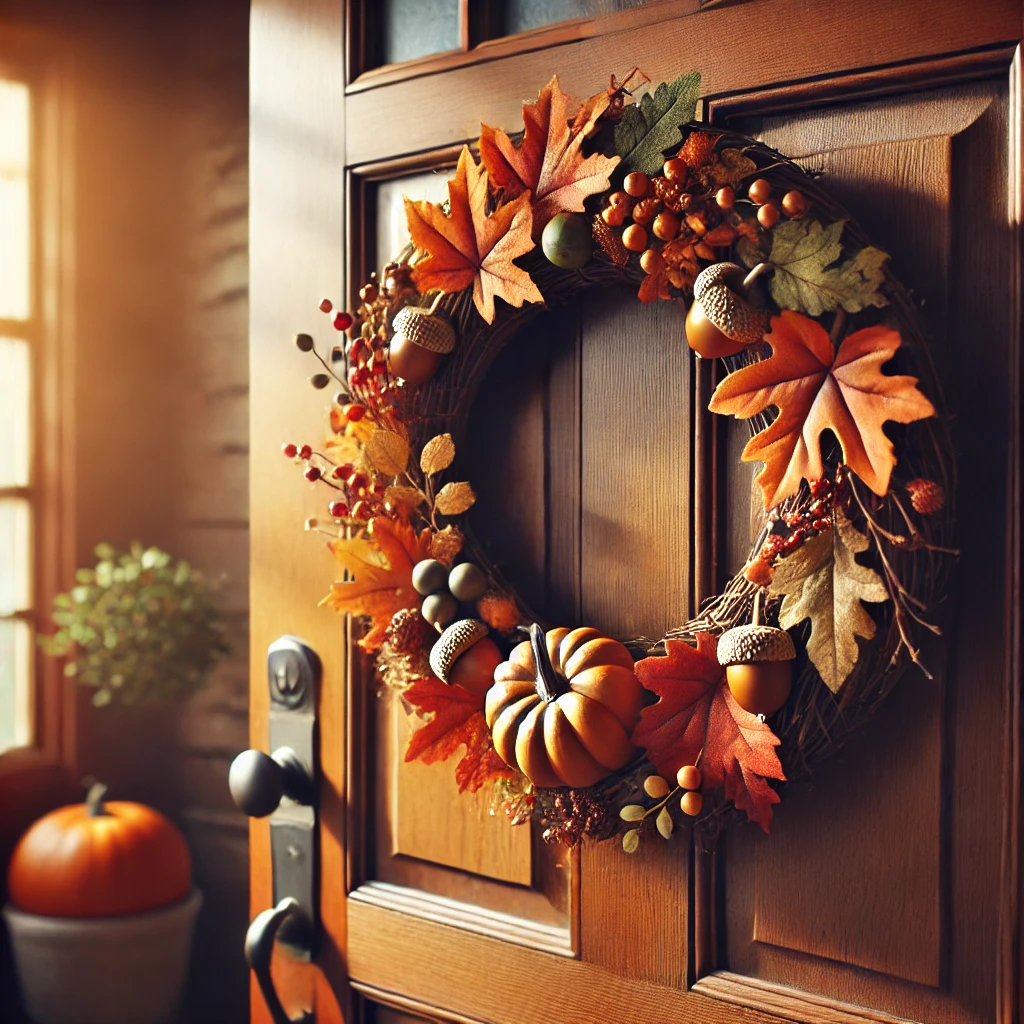Customized Fall Wreaths for Your Front Door
As autumn approaches and the foliage shifts into vibrant shades of orange, red, and yellow, it’s the ideal moment to celebrate the beauty of the season. One of the simplest yet most delightful ways to welcome fall is by crafting your own DIY fall wreath. This decorative piece not only adds a personal touch to your home but also creates an inviting atmosphere for guests. In this comprehensive guide, we’ll walk you through the process of creating customized fall wreaths that reflect your unique style while enhancing your home’s curb appeal.

1. Why a Fall Wreath Matters
A fall wreath is more than just a decoration; it’s a symbol of warmth, hospitality, and the beauty of nature’s transition. It sets the tone for your home, making a statement as guests arrive. A well-crafted wreath can evoke feelings of comfort and nostalgia, reminding us of cozy gatherings, family traditions, and the harvest season. By adorning your front door with a fall wreath, you not only enhance your home’s aesthetic but also extend a heartfelt invitation to friends and family.

2. Materials You’ll Need
Before you begin crafting, it’s important to collect all the materials you’ll need for your project. Here’s a comprehensive checklist to ensure you have everything you need for a successful project:

- Wreath Base: Choose from grapevine, foam, wire, or straw bases depending on your design preference. Each base offers a different texture and style.
- Foliage: Faux or dried leaves are excellent for adding a seasonal touch. Consider selecting a variety of shapes and colors for depth.
- Seasonal Accents: Mini pumpkins, gourds, and vibrant flowers like sunflowers or chrysanthemums will add charm and character.

- Floral Wire and Hot Glue Gun: These are essential tools for securely attaching elements to your wreath.
- Ribbons and Scissors: Ribbons can enhance your wreath’s aesthetic and provide a finishing touch.
- Wire Cutters: Handy for trimming stems and adjusting the size of your materials.
- Optional Decorations: Consider adding elements like feathers, acorns, or pinecones for additional texture.

3. Choosing Your Wreath Base
Your choice of wreath base is crucial as it sets the foundation for your design. Here’s a closer look at the different types of wreath bases:
- Grapevine Base: This rustic option adds a natural, organic feel to your wreath. It’s flexible and can easily accommodate various decorations, making it a popular choice for fall wreaths.
- Foam Base: Perfect for a more structured wreath, foam bases provide stability and allow for more intricate designs. They’re great for securing floral arrangements and accents.

- Wire Base: A lightweight option that’s easy to work with, wire bases are ideal for minimalist designs. They allow for easy attachment of various decorations while maintaining a clean look.
- Straw Base: This option gives a vintage touch and works well for traditional fall wreaths. Straw bases can be easily adorned with a variety of materials.

4. Selecting Foliage and Accents
The foliage you choose will significantly impact the overall look of your wreath. Here are some popular options for fall foliage:
- Autumn Leaves: Faux leaves in rich shades of orange, red, and yellow are perfect for creating that classic fall vibe. Look for varieties with different textures to add depth.
- Evergreens: Adding sprigs of pine or cedar can introduce a refreshing contrast to the warm autumn colors and provide a lovely fragrance.

- Dried Flowers: Flowers like lavender, wheat, and grasses can add an earthy element to your wreath and provide visual interest.
- Seasonal Fruits: Incorporating small fruits, such as apples or berries, can add a pop of color and a touch of whimsy to your design.

